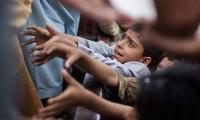The ASWJ’s Malik Ishaq faction contested intra-party polls but lost badly to the Ludhianvi Group, which supported legal ways and means for countering a rival sect. Maulana Shamsur Rehman Moavia of Malik faction won Punjab ASWJ president election by defeating Maulana Azam Tariq’s son Maulana Muhammad Moavia. Shamsur Rehman Moavia belonged to Multan district and was prayer leader at Lahore Gymkhana mosque when he was shot dead few years ago.
Senior security officials predicted fragmentation of LeJ into pieces after elimination of first, second, third and fourth line leadership. The LeJ second-in-command Muhammad Ajmal alias Akram Lahori has been waiting for his execution in Sukkur Jail. However, LeJ had developed active cells, a network of facilitators in South Punjab. It is hard to predict taking part any sort of role in LeJ activities by the sons of Maulana Azam Tariq. Maulana Haq Nawaz Jhangvi’s son had also been killed in Karachi few years ago over financial dispute. Security officials were of the view that Malik’s death has created a serious leadership crisis in LeJ because majority of its commanders, main operatives had been killed in the past.
Security experts ruled out emerging of Punjabi Taliban chief Asmatullah Moavia as chief commander of the LeJ, and said it would be out of question. The LeJ militants may prefer leader emerging from district Jhang. Talking to the correspondent, Fida Ghalvi said when Ishaq was arrested from Faisalabad in 1997 and sent to the Central Jail, Multan, Fida Ghalvi and the other witnesses were summoned for an identification parade. The witnesses pointed at Ishaq at the very onset, but he was least perturbed.
Fida Ghalvi said despite the blatant threats by Ishaq and his lawyer, he and the other witnesses refused to back down. During the trial, eight people including five eyewitnesses and three of their relatives were killed. “During the trial, we appeared 110 times before the judges during a span of eight years,” he said. Ishaq was acquitted in 2004 when a judge ruled that there was not enough evidence to convict him.
The case had been in an appeal court since then. A judge did hand down a guilty verdict in one case against Ishaq, but the Supreme Court overturned it. Poor investigation and prosecution also contributed to Ishaq getting a clean chit, said Ghalvi. He cited fear as the reason.
“Fear that Ishaq ingrained in his adversaries brought about his acquittal it’s as obvious as the daylight,” said Ghalvi, who has been diligently pursuing cases against Ishaq for the last 13 years, he added.
Opposition parties strongly criticised move, accusing BJP government of targeting Muslim community ahead of Eid
“Efforts of KP government, led by CM Ali Amin Gnadapur are yielding positive results,” he said in a statement
Despite progress, Khyber-Pakhtunkhwa and Balochistan remain epicentres of violence
As always, Geo Network has curated an exceptional lineup of programming to make Eid even more memorable
£275,000 vehicle was engulfed in flames, prompting bystanders to attempt to extinguish the fire
Bilawal Bhutto Zardari met with flood-affected women and informed them about details of houses







